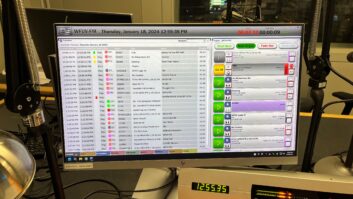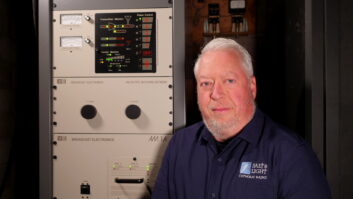MULTIPLE CITIES: Short-term disruptions to the Japanese electronics supply chain are to be expected, but history indicates minimal long-term impact, writes David Keene of Digital Signage Weekly. What follows is edited from a report by Keene on the natural disaster rocking Japan and how it’s likely to affect the overall economy:

As bad as the headlines seem on any given day, recent research by the Inter American Development Bank shows only the biggest disasters–larger yet than what’s happened in Japan up to now–have a long-term impact. The study showed that natural disasters typically do not have any significant long-term effect on subsequent economic growth of the studied country.
“The only two cases where we found that truly large natural disasters were followed by an important decline in GDP per capita were cases where the natural disaster was followed by radical political revolution, which severely affected the institutional organization of society,” it said.
In the short term, it’s likely there will be disruptions to the Japanese supply chain for the various electronics industries, from chips to finished products.
The electronics industry is based on semiconductors, and Japan’s chip factories are really at the center of the worldwide industry. Approximately 20 percent of all semiconductors and roughly 40 percent of all flash memory chips used in cell phones, smartphones, PCs, and tablets, are made in Japan. As much as China, Indonesia, and other Asian countries have opened chip factories, Japan still reigns when it comes to the manufacturing of the more sophisticated chips, whether for the iPhone or for DLP projectors. Putting 100 million micro-mirrors on one chip the size of a postage stamp as with the Texas Instruments DLP chip is not something that easily can be farmed out.
The DRAM Exchange this week that the price of NAND flash chips has risen sharply: 32Gbit devices were up 17.36 percent and 16Gb devices up 17 percent. Analysts have attributed much of this spike to a “brief interruption” that Toshiba said occurred in its NAND production complex at Yokkaichi, immediately following the earthquake. The facility is about 600 miles from the epicenter. Toshiba’s NAND Flash memory chips are used in the iPhone, iPad and a string of other tablets. But yesterday Toshiba, one of the largest Japanese exporter of computer chips, said that it would heed Tokyo Electric Power Co.’s call to cut electricity consumption in Japan by cutting back to only essential services. On Monday, Toshiba closed all of its factories in areas with power outages, aside from its headquarters and critical business offices. But early today, Yokkaichi Operations, Toshiba’s fabrication base for NAND flash memories, was already back in operation, the company said.
According to a variety of wire sources, NEC factories in both the Iwate and Fukushima prefectures have been closed because of electricity and water supply problems. Fujitsu announced on Monday that it shut down 10 plants Hitachi has closed down six factories. Canon has closed eight factories, and Nikon has closed four facilities.
Through its U.S. operation, Sharp issued a statement expressing “deepest sympathy to all the people affected by this earthquake. There are no extensive damages to our buildings or production facilities in Japan including our plant located in Yaita-city, Tochigi prefecture.” Its LCD panel-production facilities located in Sakai-city, Kameyama-city, Taki-cho and Tenri-city are operating normally.
Panasonic told TWICE magazine that there were minor injuries to the employees in its AVC Networks Co. Fukushima factory (manufacturing digital cameras); AVC Networks Co. Sendai factory (manufacturing optical pickups); Panasonic Electric Works Co., Ltd. Koriyama factory (manufacturing electronic materials); and Sanyo Electric Co., Ltd. Gunma factory (manufacturing washer/dryers, etc.). Panasonic said in a statement that fires or major damage to facilities have not been reported and that “we are suspending operations in the factory affected by the earthquake and continuing to evaluate further details of the damage’
Panasonic announced March 12 it had committed 300 million yen monetary contributions and in-kind donations of 10,000 units each of radios and flashlights and 500,000 dry batteries to aid victims and support the recovery of areas affected.
Late Monday, Texas Instruments warned of lost revenue from two of its semiconductor plants in Japan. The Dallas-based chipmaker, that will supply the dual-core processor for Research In Motion’s new PlayBook Tablet, reported that damage from the quake as well as the subsequent Japanese government-led electricity rationing will prevent the restarting of the factories in the near term.
Shortly after the earthquake, Epson established a Disaster Headquarters headed by President Minoru Usui at its Head Office in Suwa, Nagano Prefecture. As a result of the earthquake, Epson suffered damage to its Sakata Plant and also to group companies in the Tohoku areas. Epson today announced it cancelled the Color Imaging Exhibition 2011. The event was scheduled to be held in Tokyo from March 19 to 21.
Texas Instruments said its plant 40 miles northwest of Tokyo in Miho, which makes analog chips and DLP chips for digital video projectors, had been closed, but would return to production in several stages from May to July of this year. The Miho plant was responsible for 10 percent of Texas Instruments’ output last year. But TI also reported Monday that it had already found alternative manufacturing capacity for 60 percent of the Miho plant’s production.
Tak Nakata, president of Yamaha Corp. of America, who is currently in Hamamatsu, Japan, issued the following statement: “On behalf of Yamaha, I wish to thank our business partners in the United States for their thoughts and prayers in response to the earthquake that impacted Japan and the Pacific basin.
“As far as we know, no Yamaha employees have been injured as a result of this disaster. Also, there has been no significant damage to our offices or factories. It is still too early to determine if this ongoing situation will affect shipments due to the currently unknown impact on ports, vessels and shipping lanes. We will provide additional information just as soon as it is made available to Yamaha.”
Sony has responded to reports of widespread power outages by voluntarily suspending operations at several sites. Sony said that no significant injuries have been reported to employees working at any of these sites when the earthquake or tsunami occurred.
In related news, Sony announced on Monday that it will donate 300 million Japanese yen to help relief and recovery efforts in communities affected. Additionally, a disaster relief fund will collect donations across the Sony Group from employees worldwide, and their contributions will be matched by the company through a matching gifts program. The company will also donate 30,000 Sony portable radios to assist the relief of earthquake victims, while the Sony Group will prepare further product donations going forward, taking into account the local needs.
“In times like these, we are reminded of how important and fragile we are and of the positive impact we can have–both as individuals and, collectively, as a company–to assist those in need,” said Sir Howard Stringer, chairman, CEO and president of Sony Corp. “We will continue to make the utmost effort to help the swift recovery of the affected communities in the region.”
Commenting on the effect of the earthquake and subsequent events on the LCD panel manufacturing sector in Japan, David Hsieh, vice president, Greater China Market at DisplaySearch, issued an email blast saying that “Some TFT LCD factories located in the impacted area, including Hitachi Display (Chiba prefecture), NEC’s Gen 2 (Akita prefecture), Toshiba’s Fukaya and Ishikawa factories, as well as Epson’s Gen 2, were reportedly not damaged by the earthquake. But it is very likely that these factories have paused production to gauge the impact and calibrate the facilities. These factories are all focused on small/medium panels, and their share in the industry is very minor. We are assuming that there will be no major impact to the TFT LCD industry as a result.”
It is not known, however, how much this might change if electricity supply disruptions are magnified in coming days.
“The majority of the TFT LCD industry,” Hsieh continued, “is not located in the area most heavily impacted by the earthquake. Sharp’s Gen 8 and Gen 10, Panasonic LCD’s Gen 8, and NEG’s glass tanks are all located in the Kansai area, which does not appear to have been affected by the earthquake. Key LCD component makers, like Nitto Denko, DNP, Sumitomo, Toppan, and Corning, have located most of their facilities in west Japan. These LCD and components clusters do not appear to have been affected.”
Late Sunday, the Japanese government asked major companies to reduce electricity consumption; some responded by temporarily closing factories. And in an eerie sign of the extent of the precautions, almost all of the large-format digital signage was turned off, including the LED billboards in Japans major cities.
Japan’s Internet infrastructure has held up remarkably well. According to the Internet performance monitoring company Renesys, Internet traffic to and from Japan dropped by about 25 gigabits per second in the immediate aftermath of the earthquake, but returned to normal levels only a few hours later. Traffic at Japan’s JPNAP Layer 2 Internet exchange service appears to have slowed by just 10 percent since Friday, according to Renesys.
— David Keene, Digital Signage Weekly











